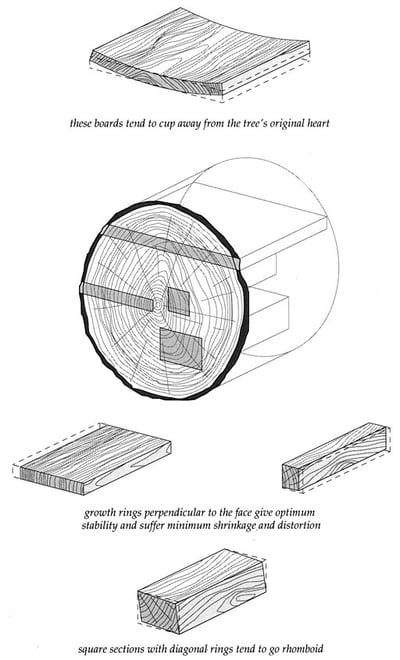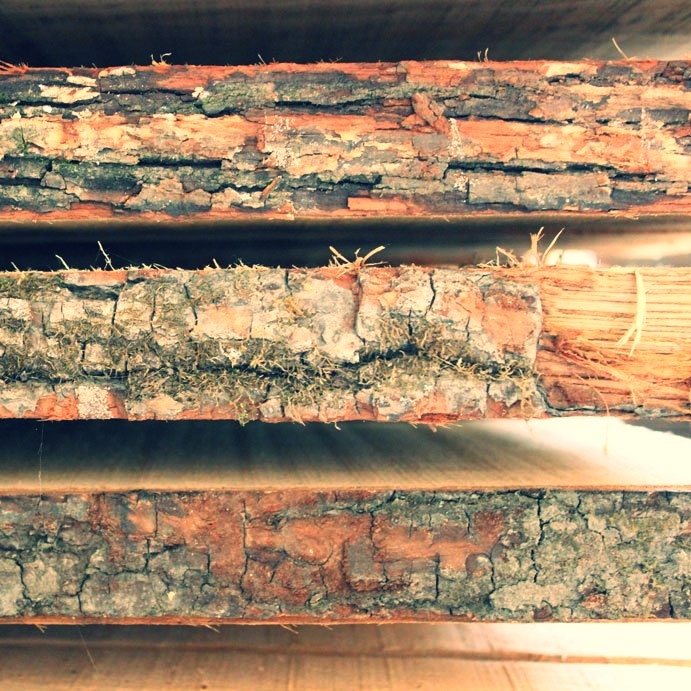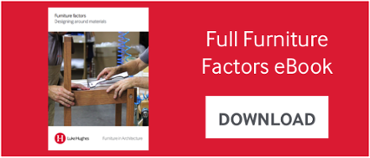In this post, we reveal the three most common forms of timber distortion. This continues our series covering technical considerations when designing with materials, which our past clients and collaborators have found invaluable for their custom furniture projects.
Please note: this information is based on the experience of Luke Hughes; it is not intended to be the final word.
Typical timber distortions
Solid timber expands and contracts with fluctuations of moisture (more than with variations of temperature). The basic rule is that drying boards tend to cup away from the tree’s original heart. This is affected by the direction of the growth rings, and can be seen in three ways:

1. Growth rings at a right angle
Growth rings at right angles to the surface cause minimum shrinkage and distortion.
2. Perpendicular growth rings
Perpendicular rings give optimum stability - a handy tip when selecting (quarter sawn).
3. Square sections
Square sections with diagonal rings tend to go rhomboid.
Calculating timber movement
Try the Woodbin's online timber Moistulator and Shrinkultor to precisely calculate timber movement.
The Moistulator allows you to calculate the Equilibrium Moisture Content (EMC). This is the moisture level that will be reached by timber in a specific environment where the timber has been there long enough to balance its moisture content with the temperature and humidity around it. These numbers can then be used to calculate the timber movement using the Shrinkulator.
Further technical knowledge on timber and more can be found in our new eBook 'Furniture factors: Designing around materials'.
Enjoy the article? Delve deeper into Luke Hughes & Company’s place in the Arts and Crafts tradition with the fascinating new book 'Furniture in Architecture' . Available through Thames & Hudson






